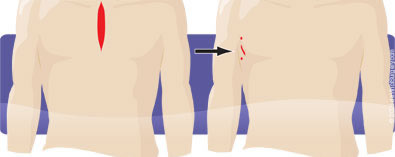Atrial Septal Defect Repair
Treatment for Atrial Septal Defect
Repair of an Atrial Septal Defect (ASD) may not require treatment if there are few or no symptoms, or if the defect is small. Surgical closure of the defect is recommended if the ASD is large or if symptoms occur.
Traditional “open heart” surgery involves sternotomy – cutting through the breastbone and opening the ribs. This can cause significant trauma, prolong healing time and increase the risk for serious complications and even mortality.
Robotic-Assisted Atrial Septal Defect Repair: A Less Invasive Option
 Robotic-assisted atrial septal defect repair is an alternative to conventional open heart surgery. When performed robotically with the da Vinci Surgical System, ASD repair is done with unparalleled precision and control through a few small incisions along the side of the chest.
Robotic-assisted atrial septal defect repair is an alternative to conventional open heart surgery. When performed robotically with the da Vinci Surgical System, ASD repair is done with unparalleled precision and control through a few small incisions along the side of the chest.
Benefits of Robotic-Assisted Atrial Septal Defect Repair
In addition to avoiding the pain and trauma of sternotomy and rib spreading, this may provide patient benefits such as:
- Less risk of infection
- Less blood loss and need for blood transfusions
- Shorter hospital stay
- Significantly less pain and scarring
- Faster recovery
- Quicker return to normal activities
As with any surgery, these benefits cannot be guaranteed, as surgery is both patient- and procedure-specific. While robotic-assisted ASD repair is considered safe and effective, it may not be appropriate for every individual. Always ask your doctor about all treatment options, as well as their risks and benefits.
Illustrations courtesy of Intuitive Surgical, Inc.